#jimmy carter 1976
Text
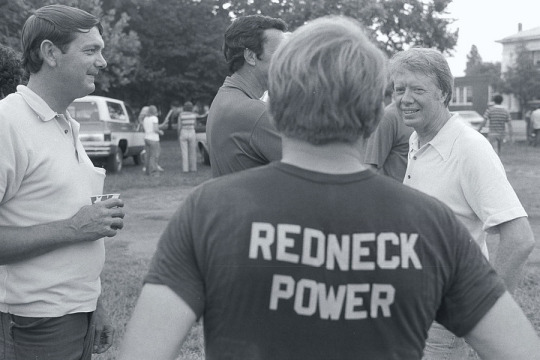
Billy (in the "Redneck Power" shirt) and Jimmy Carter at a gathering in the Carters' hometown of Plains, Georgia, 1976
65 notes
·
View notes
Photo

218 notes
·
View notes
Text

Jimmy Carter and Walter Mondale - Leaders, for a change. 1976
188 notes
·
View notes
Text

Jimmy Carter campaign poster, 1976. Intended for college campuses.
50 notes
·
View notes
Photo



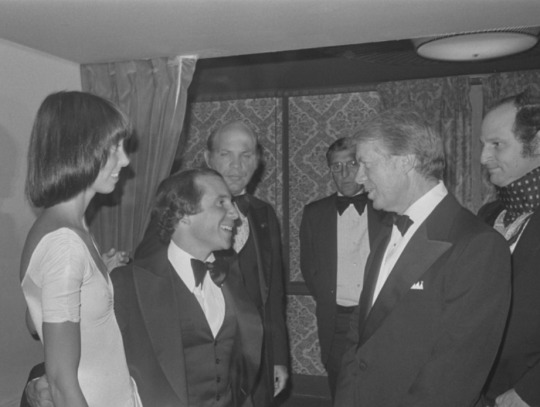

Shelley Duvall, Paul Simon Jamie Wyeth, and President-elect Jimmy Carter at a dinner party in 1976.
Photos by Andy Warhol
257 notes
·
View notes
Text
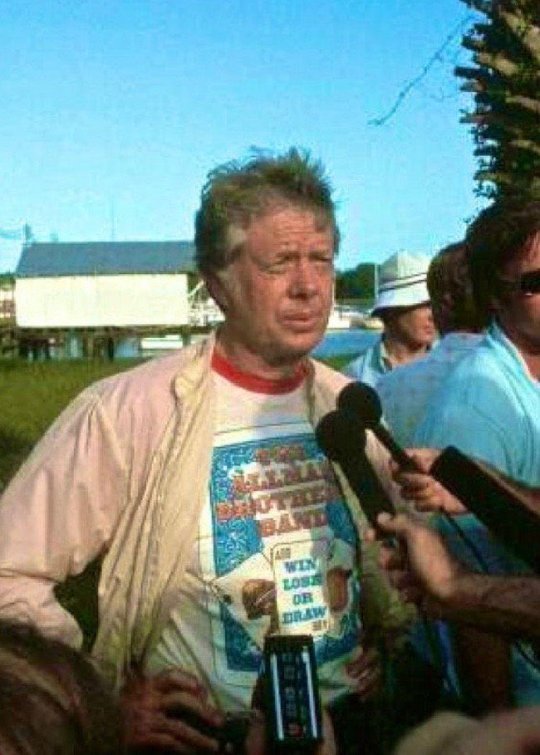
78 notes
·
View notes
Note
What do you mean when you said Carter faced a "historically weak group of challengers" in 76?
Quite simply, Jimmy Carter got lucky when it came to his opposition for the Democratic Presidential nomination in 1976 because the biggest potential Democratic candidates chose not to run that year.
It's difficult now to understand how little-known Carter was when he decided to run for President in 1976. He had served a single term as Governor of Georgia and had almost zero national name recognition. So, he was very fortunate that the biggest names in the Democratic Party decided against running for various reasons. Chappaquiddick was still too fresh for Ted Kennedy to make his long-awaited bid for the White House that year. George McGovern had lost one of the biggest landslides in American history to Richard Nixon four years earlier. Senator Edmund Muskie of Maine and New York City Mayor John Lindsay were much bigger names than Carter, but also decided against running. Former Vice President Hubert H. Humphrey considered jumping in the race for months, but ultimately decided against it, probably because he was dying of cancer. If any of those five Democrats had been in the race, they almost certainly would have been favored over Carter.
It's not fair to suggest that luck alone elected Carter. He ran an excellent campaign, and he was the first Democrat to jump in the race, so he gave himself plenty of time to introduce himself to the country -- which was necessary because, again, nobody outside of Georgia knew who he was! And his timing worked out perfectly because as the more-and-more potential heavyweight Democratic contenders decided against running, Carter was seen as an honest and appealing outsider who could bring a fresh approach to Washington.
But the field of candidates who did eventually seek the Democratic nomination in 1976 is so weak that a lot of people today probably don't even know who most of them were. I mean, one of the candidates who went into the 1976 Democratic National Convention was the notorious racist and Alabama Governor George C. Wallace! The best-known of Carter's 1976 Democratic opponents was Jerry Brown, who was in his first term as Governor of California and just 38 years old at the time, and he started to gain some real momentum in the campaign. However, Brown jumped in the race way too late and didn't have enough time to capture enough delegates before the Convention.
Other than Brown and Wallace, though, Carter's main opponents for the Democratic nomination in 1976 were Arizona Congressman Mo Udall, Senator Frank Church of Idaho, Senator Henry "Scoop" Jackson of Washington, Senator Birch Bayh of Indiana, anti-abortion advocate Ellen McCormack, former Senator Fred R. Harris of Oklahoma, and Governor Milton Shapp of Pennsylvania. If I told you I made up six of those people, would you be shocked? But I didn't! That was the Democratic field in 1976!
#1976 Election#Presidents#History#Politics#Presidential Elections#Presidential Politics#Democratic Party#1976 Democratic Presidential nomination#1976 Democratic National Convention#Jimmy Carter#President Carter
21 notes
·
View notes
Text
youtube
'Jesus Freaks'
NETWORK NEWS - July 11, 1976
Various networks Network coverage [possibly NBC's?] of the Gay Rights demonstration outside the Democratic National Convention in NYC. The activists were calling for nondiscrimination laws and the decriminalization of same-sex sex.
Notice the "GAYS FOR CARTER" banner in the last shot, and an early reclamation of the pink triangle on a protest sign, set in a black circle like the future ACT UP logo. [Steven Capsuto]
#queer history#activism#jesus freaks#christian nationalism#queer#lgbqti#lgbtq#lgbt#1970s#gays for carter#jimmy carter#protest#demonstration#pink triangle#lamda#act up#dnc#democratic national convention#nyc#new york#new york city#70s#1976#homosexual#Youtube
4 notes
·
View notes
Text
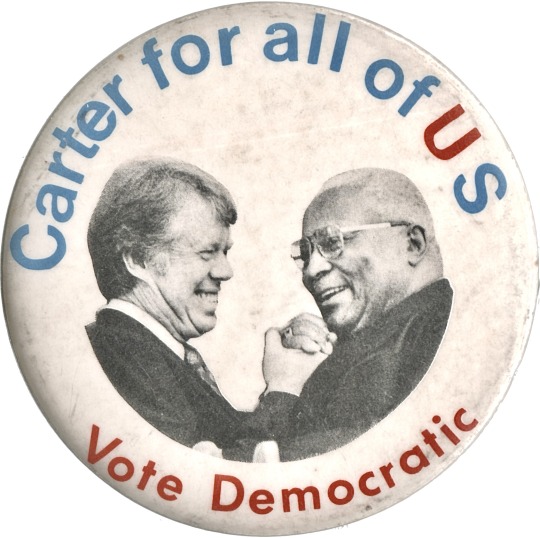
carter for US , vote democratic
2 notes
·
View notes
Text
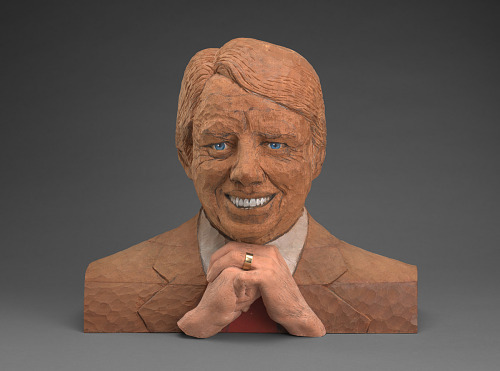
Marisol Escobar, Jimmy Carter, 1976
0 notes
Text
youtube
November 3, 1976
4 AM
Plains GA
0 notes
Text

Minnie Julia Riperton Rudolph (November 8, 1947 – July 12, 1979) was an American singer-songwriter best known for her 1975 single "Lovin' You" and her four octave D3 to F♯7 coloratura soprano range. She is also widely known for her use of the whistle register and has been referred to by the media as the "Queen of the Whistle Register."
Minnie Riperton grew up in Chicago's Bronzeville neighborhood on the South Side. As a child, she studied music, drama and dance at Chicago's Lincoln Center. The youngest of eight children in a musical family, she embraced the arts early. Although she began with ballet and modern dance, her parents recognized her vocal and musical abilities and encouraged her to pursue music and voice. At Chicago's Abraham Lincoln Center, she received operatic vocal training from Marion Jeffery. She practiced breathing and phrasing, with particular emphasis on diction. Jeffery also trained Riperton to use her full range. While studying under Jeffery, she sang operettas and show tunes, in preparation for a career in opera. Jeffery was so convinced of her pupil's abilities that she strongly pushed her to further study the classics at Chicago's Junior Lyric Opera.
The young Riperton was, however, becoming interested in soul, rhythm and blues, and rock. In her teen years, she sang lead vocals for the Chicago-based girl group the Gems. Eventually the group became a session group known as Studio Three and it was during this period that they provided the backing vocals on the classic 1965 Fontella Bass hit "Rescue Me".
After graduating from Hyde Park High School (now Hyde Park Academy High School), she enrolled at Loop College and became a member of Zeta Phi Beta sorority. She dropped out of college to pursue her music career.
Her early affiliation with the legendary Chicago-based Chess Records afforded her the opportunity to sing backup for various established artists such as Etta James, Fontella Bass, Ramsey Lewis, Bo Diddley, Chuck Berry and Muddy Waters. While at Chess, Riperton also sang lead for the experimental rock/soul group Rotary Connection, from 1967 to 1971.
On April 5, 1975, Riperton reached the apex of her career with her No. 1 single "Lovin' You". The single was the last release from her 1974 gold album titled Perfect Angel. Riperton's third album, Adventures in Paradise was released in 1975. Despite the R&B hit "Inside My Love", some radio stations refused to play "Inside My Love" due to the lyrics.
Her fourth album for Epic Records, titled Stay in Love (1977), featured another collaboration with Stevie Wonder in the funky disco tune "Stick Together".
In 1978, Richard Rudolph and Riperton's attorney Mike Rosenfeld orchestrated a move to Capitol Records for Riperton and her CBS Records catalog. In April 1979, Riperton released her fifth and final album, Minnie. "Memory Lane" was a hit from the album.
Riperton provided backing vocals on Stevie Wonder's songs "Creepin'" from 1974's Fulfillingness' First Finale and "Ordinary Pain" from 1976's Songs in the Key of Life. In 1977, she lent her vocal abilities to a track named "Yesterday and Karma", on Osamu Kitajima's album, Osamu.
In January 1976, Riperton was diagnosed with breast cancer and, in April, she underwent a radical mastectomy. By the time of diagnosis, the cancer had metastasized and she was given about six months to live. Despite the grim prognosis, she continued recording and touring. She was one of the first celebrities to go public with her breast cancer diagnosis but did not disclose she was terminally ill.
In 1977, she became a spokesperson for the American Cancer Society. In 1978, she received the American Cancer Society's Courage Award, which was presented to her at the White House by President Jimmy Carter.
Riperton died of cancer on July 12, 1979 at the age 31.
During the 1990s, Riperton's music was sampled by many rap and hip-hop artists, including Tupac Shakur, Dr. Dre, A Tribe Called Quest, Blumentopf, The Orb
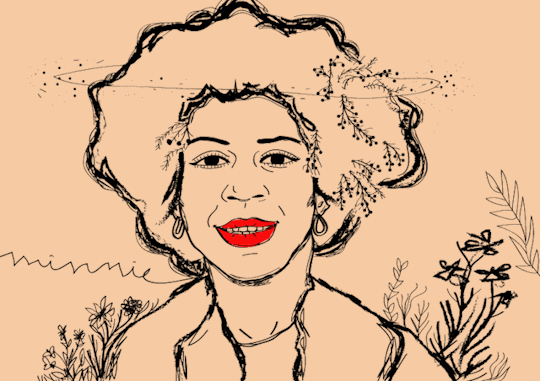

#african#afrakan#kemetic dreams#africans#afrakans#brown skin#brownskin#african culture#afrakan spirituality#riperton#tupac shakur#dr dre#a tribe called quest#the orb#minnie julia riperton#Minnie Julia Riperton Rudolph
226 notes
·
View notes
Text
How old is Carol Danvers???
(Inspired by a post by @blindluck which was in turn inspired by a post by me and @marvelsassbutts )
So I just found out the official Captain Marvel wiki places Carol Danvers’s birth date in 1965. At first I thought “that’s ridiculous” for reasons that will become clear through this long ass post. But then I saw they cited drawings by the assistant art director on Captain Marvel, found on her portfolio! That’s pretty official!

Wait what’s that at the bottom…
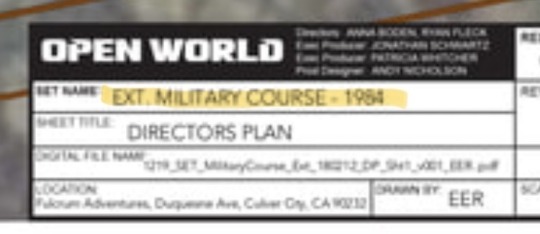
1984???? For Carol’s USAFA basic training???? This is impossible, the movie is wrong, and here’s why.
(Excerpt from my future video essay incoming)
There are no dates in Higher, Further, Faster; the marketing text on Amazon, Liza Palmer’s website, etc just says “80s.” So, we need to do some detective work.

We know that the 2019 film Captain Marvel takes place in 1995. Since it takes place in Southern California and Louisiana, the warm weather doesn’t tell us much about the time of year. Personally, I believe it takes place on March 8, 1995, because that’s the exact day I was born, and my birthday is the day the movie was released on to coincide with International Women’s Day. Regardless, Monica Rambeau is eleven years old in the film, putting her birth in 1983 or 1984. So, Maria’s pregnancy must have begun in 1982 or 1983.
Here’s a “fun” fact about US military academies: until less than one year ago (summer 2023, a full three years after Captain Marvel came out), cadets at USAFA who became pregnant were required to either drop out, have an abortion, or relinquish their parental rights to their child.
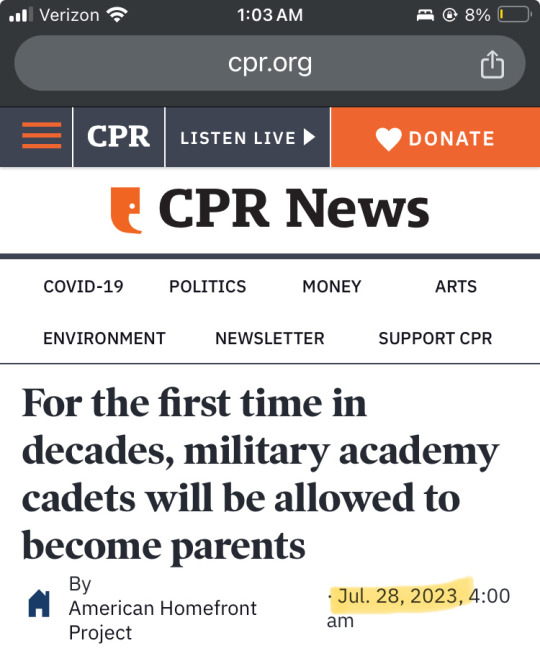
Dropping out also means reimbursing the government for your tuition for all classes you’ve taken up to this point, and giving up your ability to be commissioned as a second lieutenant in the Air Force upon graduation. Definitely not an option someone as driven as Maria wants to consider. In fact, we know this isn’t what happened, because this news article Carol hung up in her spaceship in The Marvels says that Maria Rambeau is a USAFA graduate.

We also know that Maria didn’t have an abortion, because, well, Monica Rambeau herself is tangible evidence. Theoretically, it is possible for Maria to have given up parental rights and adopted back her own child after graduation. Before the policy change in 2023 that allowed cadets to be parents, many found this to be their best option (see the article I screenshotted above). However, this process is really expensive and takes a lot of work with a lawyer over a period of months or years. From the little we know of Carol and Maria’s life pre-crash, (it was busy, they lived in an expensive area, and Maria only had Carol for support), I think we can assume that it’s less likely that Maria was forced to adopt her own daughter than that Maria graduated USAFA before becoming pregnant in 1982 or 83.
That still doesn’t answer the question of when this book takes place, though. The exact year is important, as the military had some major differences under the Gerald Ford, Jimmy Carter, and Ronald Reagan administrations of the 70s and 80s, and one of the things I want to assess this book on is accuracy.
Oh wait, what’s that? Another discriminatory policy that helps us date this book? That’s right, USAFA didn’t enroll women as cadets until Public Law 94-106 went into effect in 1976.

What’s more, Carol and Maria cannot have been part of this first group of women cadets, because in the book, there is an upperclassman character who is a woman. Officer Cadet Chen is one of the leaders of Basic Training for Carol and Maria’s flight, a position cadets aren’t allowed to hold until their third or fourth year at the Academy.
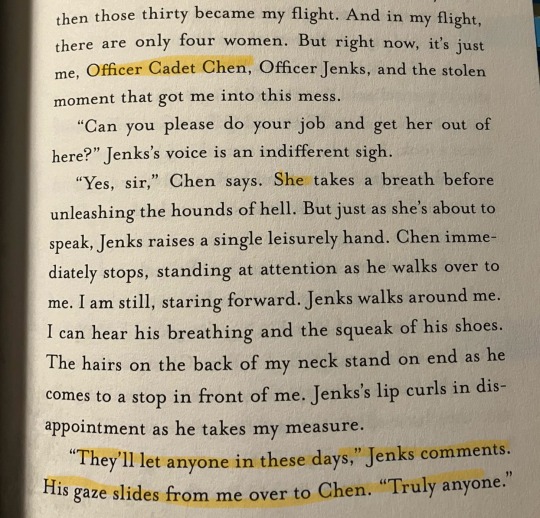
So, Carol and Maria must enter USAFA no earlier than 1978 to be two or more years younger than Chen, and must graduate no later than 1983 for Monica to exist. To comply with the marketing blurb’s declaration that this book takes place “in the 80s”, let’s say that Carol and Maria’s first year is the 1979-1980 school year.
(End excerpt)
In conclusion, Maria and Carol were born in 1960 or 1961 (with pretty equal likelihood of which birthday makes them 18 at the start of the book, since USAFA basic happens the summer before the school year), not 1965. It would be impossible for them to have done basic training in 1984 as in the production drawing, because they would have to have already graduated and be well on their way to test pilot school which is a whole other policy can of worms before Monica’s birth in 1983 or 1984.
In conclusion conclusion, Carol is ~34 in Captain Marvel and ~64 in The Marvels, and the MCU should hire fans to fact check for them.
#thank u blindluck for bringing my attention to this wiki I had such a fun time on this rabbit hole#the marvels#captain marvel#carol danvers#maria rambeau#higher further faster book#carolmaria#danbeau#monica rambeau
76 notes
·
View notes
Video
youtube
How the Corporate Takeover of American Politics Began
The corporate takeover of American politics started with a man and a memo you've probably never heard of.
In 1971, the U.S. Chamber of Commerce asked Lewis Powell, a corporate attorney who would go on to become a Supreme Court justice, to draft a memo on the state of the country.
Powell’s memo argued that the American economic system was “under broad attack” from consumer, labor, and environmental groups.
In reality, these groups were doing nothing more than enforcing the implicit social contract that had emerged at the end of the Second World War. They wanted to ensure corporations were responsive to all their stakeholders — workers, consumers, and the environment — not just their shareholders.
But Powell and the Chamber saw it differently. In his memo, Powell urged businesses to mobilize for political combat, and stressed that the critical ingredients for success were joint organizing and funding.
The Chamber distributed the memo to leading CEOs, large businesses, and trade associations — hoping to persuade them that Big Business could dominate American politics in ways not seen since the Gilded Age.
It worked.
The Chamber’s call for a business crusade birthed a new corporate-political industry practically overnight. Tens of thousands of corporate lobbyists and political operatives descended on Washington and state capitals across the country.
I should know — I saw it happen with my own eyes.
In 1976, I worked at the Federal Trade Commission. Jimmy Carter had appointed consumer advocates to battle big corporations that for years had been deluding or injuring consumers.
Yet almost everything we initiated at the FTC was met by unexpectedly fierce political resistance from Congress. At one point, when we began examining advertising directed at children, Congress stopped funding the agency altogether, shutting it down for weeks.
I was dumbfounded. What had happened?
In three words, The Powell Memo.
Lobbyists and their allies in Congress, and eventually the Reagan administration, worked to defang agencies like the FTC — and to staff them with officials who would overlook corporate misbehavior.
Their influence led the FTC to stop seriously enforcing antitrust laws — among other things — allowing massive corporations to merge and concentrate their power even further.
Washington was transformed from a sleepy government town into a glittering center of corporate America — replete with elegant office buildings, fancy restaurants, and five-star hotels.
Meanwhile, Justice Lewis Powell used the Court to chip away at restrictions on corporate power in politics. His opinions in the 1970s and 80s laid the foundation for corporations to claim free speech rights in the form of financial contributions to political campaigns.
Put another way — without Lewis Powell, there would probably be no Citizens United — the case that threw out limits on corporate campaign spending as a violation of the “free speech” of corporations.
These actions have transformed our political system. Corporate money supports platoons of lawyers, often outgunning any state or federal attorneys who dare to stand in their way. Lobbying has become a $3.7 billion dollar industry.
Corporations regularly outspend labor unions and public interest groups during election years. And too many politicians in Washington represent the interests of corporations — not their constituents. As a result, corporate taxes have been cut, loopholes widened, and regulations gutted.
Corporate consolidation has also given companies unprecedented market power, allowing them to raise prices on everything from baby formula to gasoline. Their profits have jumped into the stratosphere — the highest in 70 years.
But despite the success of the Powell Memo, Big Business has not yet won. The people are beginning to fight back.
First, antitrust is making a comeback. Both at the Federal Trade Commission and the Justice Department we’re seeing a new willingness to take on corporate power.
Second, working people are standing up. Across the country workers are unionizing at a faster rate than we’ve seen in decades — including at some of the biggest corporations in the world — and they’re winning.
Third, campaign finance reform is within reach. Millions of Americans are intent on limiting corporate money in politics – and politicians are starting to listen.
All of these tell me that now is our best opportunity in decades to take on corporate power — at the ballot box, in the workplace, and in Washington.
Let’s get it done.
#youtube#videos#video#powell memo#corporations#wall street#finance#corruption#politics#lobbying#government
1K notes
·
View notes
Text
@midians-world @dirhwangdaseul
Missing pronouns and double-entendres
Historians have traced the roots of country music at least to the 17th century, but the “big bang” moment for the industry didn’t happen until the 1920s.
In 1927, record producer Ralph Peer traveled from New York City to Bristol, Tennessee to hold recording sessions with “hillbilly” artists from the surrounding areas. The Bristol Sessions, as they came to be known, introduced the world to artists like Jimmie Rodgers and The Carter Family, foundational figures in what we now call country music.
That same year, in New York, an artist named Ewen Hail recorded “Lavender Cowboy,” a story-song about a boyish figure “with only two hairs on his chest” who takes on a group of outlaws and dies a hero’s death. Adapted from a 1923 poem by pulp writer Harold Hersey, “Lavender Cowboy” appeared in the 1930 film Oklahoma Cyclone and has since been covered many times, most notably by Vernon Dalhart in 1939.
A couple years later, the Prairie Ramblers recorded “I Love My Fruit,” a Western swing-style novelty song so ripe with double-entendres that the group recorded it using a pseudonym. Attributed to the Sweet Violet Boys, “I Love My Fruit” is gloriously homoerotic, with lyrics that extol the virtues of (among other things) chewing on banana skin.
youtube
youtube
The 1960s saw the emergence of Wilma Burgess, a mainstream star who wasn’t able to be out but also never hid her identity. A protege of prolific producer Owen Bradley — who saw her as a potential successor to Patsy Cline — Burgess insisted on recording songs where the love interest was not referred to by gendered pronouns. When she did occasionally record songs addressed to male lovers, she did so under the agreement with Bradley that her next recording would be a song of her choice. Her songs “Baby” and “Misty Blue” both cracked the top 10, and she still holds the record for the most charted singles by a gay country artist.'
youtube
Burgess left the country music industry in the late 70s, but she remained active in Nashville’s queer scene, opening one of the city’s first lesbian bars in the early 80s.
Queer country music’s “lost pioneer”
No queer country history would be complete without the story of Patrick Haggerty, the man responsible for what’s widely considered the first openly gay country album, Lavender Country.
Haggerty grew up on a dairy farm in rural Washington, the sixth of ten children born to hard-working parents. Despite growing up in the repressive climate of the 50s, Haggerty has said his father was accepting of his sexuality, which was evident from a young age.
After getting kicked out of the Peace Corps for being gay in 1966, Haggerty decided to devote his life to activism, becoming involved with the Gay Liberation Front. His anger over the injustices of the era became the basis for Lavender Country, the 1973 album that would define his legacy.
The album, which Haggerty recorded with his band of the same name, is scathing and often funny, featuring would-be classics like “Back in the Closet Again” and “Cryin’ These C**ksucking Tears” delivered in a loose, folky style.
youtube
youtube
With the support of the Gay Community Services of Seattle, 1000 copies of Lavender Country were created, advertised in gay periodicals, and sold at gay bookstores. Despite the limited number of copies, the album attracted a fair amount of attention in the gay underground. “Lavender Country” played at Seattle Pride and other gay events in the region.
The band disbanded in 1976, and Haggerty thought his music career was behind him. A self-described “screaming Marxist b***h,” he became further involved in activist circles, later co-founding the Seattle chapter of ACT UP and running for Seattle City Council and the state House of Representatives as an independent.
the article goes into more, like Lang's Shadowland
youtube
58 notes
·
View notes
Text
Three of Trump's rivals for the GOP nomination say they would pardon Trump for his crimes if they get elected president.
The leading candidate for the Republican presidential nomination faces 91 criminal charges, nearly half of which are at the federal level. And yet his two main GOP rivals have said they would pardon him if they’re elected.
[ ... ]
While campaigning in the days leading up to the first votes of 2024’s Republican primary elections, Ron DeSantis and Nikki Haley have both signalled they would grant clemency to the former president because it would be in the nation’s “interest” to do so.
[ ... ]
Republican officials and Mr Trump’s GOP rivals for the 2024 nomination have largely rushed to his defence after his indictments. Vivek Ramaswamy pledged to pardon Mr Trump shortly after he was federally indicted in the Mar-a-Lago case.
[ ... ]
Pardoning him would merely prove that the US does have “two systems of justice,” GOP rival Chris Christie told supporters in New Hampshire last week. But not the kind that Mr Trump believes.
“One for all of us and one for the most powerful,” Mr Christie said. “If we allow that to happen as a country, we would be no better – no better – than a lot of these tin-pot democracies around the world who treat the privileged different than they treat everyday citizens.”
Asa Hutchinson, who is technically still in the race, reasserted that he would not pardon Trump.
Republican Asa Hutchinson won't pardon Trump if he's convicted
So here's the GOP Trump pardon scoreboard...

It's worth noting that President Gerald Ford gave a full pardon to Richard Nixon a month after he succeeded the disgraced Nixon. The pardon was highly unpopular and was likely a factor in Ford's narrow defeat by Democrat Jimmy Carter in the 1976 election.
Pardons for Trump might play well with the MAGA base but would be much less popular with the broader public.
#donald trump#pardons for trump's crimes#gop presidential nomination#nikki haley#ron desantis#vivek ramaswamy#chris christie#asa hutchinson#gerald ford#richard nixon#two-tiered justice system#get out of jail free card for billionaires#election 2024
25 notes
·
View notes